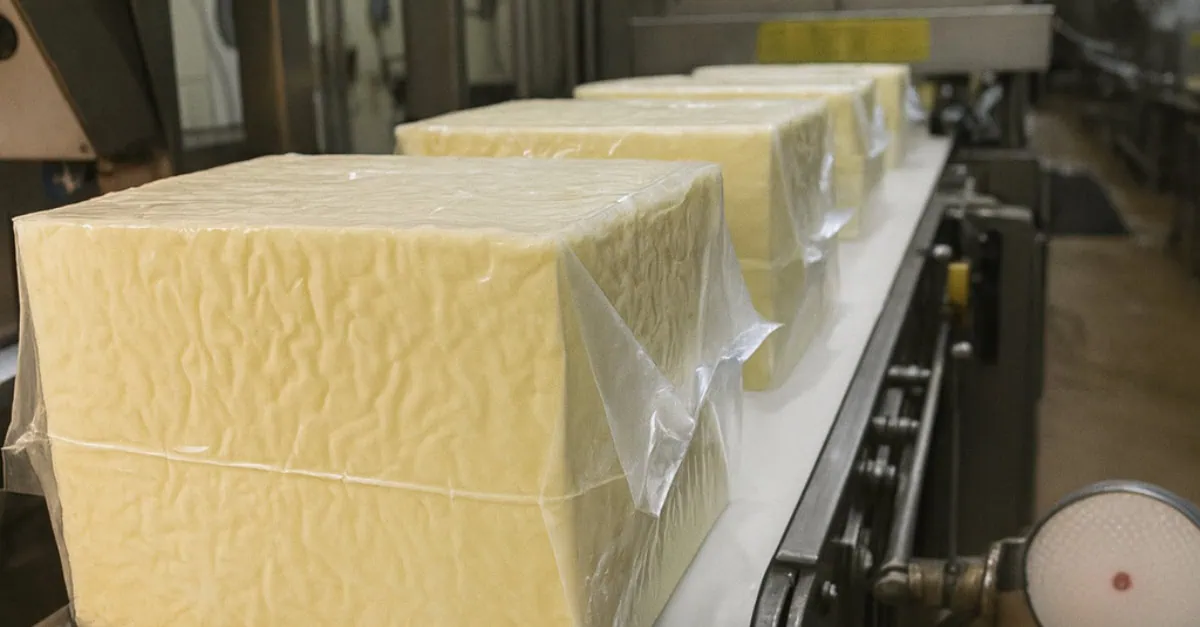July 21, 2025 – Vesper Market Intelligence
With August 1 rapidly approaching, the impending dairy tariff increases are creating significant market tension as European butter reaches the psychological €7,000/MT threshold while US whey markets face unprecedented uncertainty over export destinations.
European butter pressure mounts ahead of tariff implementation
European butter markets have shown weakness in recent weeks, with prices shedding over 15 cents in just three weeks as deals now register below the €7,000 mark. At current levels of $3.68/lb, prices remain historically elevated, partly due to the Euro’s strength making European products even more expensive in dollar terms.
The timing couldn’t be more critical for US consumers of premium European dairy products. The spread between Irish and US butter prices has grown so large that consumers are already reconsidering their preferred brands. “For those hoping that European butter’s recent weakness would make Irish butter more affordable, the increased import tariffs will crush any chance of cheaper Irish butter reaching US shelves,” according to Vesper’s latest market analysis.
US cheese imports face major disruption
European cheese imports reached a record 238 million pounds in 2024, up 16 million pounds from the previous year. Through May 2025, imports are already running 2 million pounds ahead of last year’s pace, with France and Italy dominating at nearly 40% of volumes.
However, perspective is crucial when examining these numbers. While 238 million pounds sounds substantial, it represents a tiny fraction of total US cheese consumption when viewed on a supply and demand basis. The impact will be most felt in specialty cheese categories including Grana Padano, Brie, Blue cheese, Gorgonzola, and Dutch Gouda.
A Michigan cheese manufacturer recently highlighted the opportunity these tariffs create for domestic producers, as 30% tariffs on EU cheese imports will make European specialty cheeses significantly more expensive for American buyers.
Whey markets split between protein boom and export uncertainty
The whey market continues to operate as two distinct segments with vastly different outlooks:
High protein products: Current prices sit at three times historical lows, driven by sustained demand from the protein boom and GLP-1 diet trends. Any price relief triggers immediate demand, keeping these markets tight.
Lower protein products: Dry whey, lactose, and permeate face a precarious situation, already at rock-bottom prices but confronting massive export uncertainty.
The export challenge is particularly stark. Of the top 10 export destinations for US whey and modified whey, the US has issued tariff threat letters to seven countries: Indonesia, Vietnam, Philippines, Japan, Thailand, Malaysia, and South Korea. Combined with the ongoing precarious trade relationship with China, this means eight out of ten biggest buyers could potentially shift demand elsewhere.
Vesper launches tariff tracker tool
In response to increased customer demand for tariff analysis tools, Vesper has launched a new tariff tracker and comparison dashboard widget. The tool allows users to compare landed costs across origins instantly and see how different tariff rates can flip competitive dynamics overnight.
The tracker addresses the reality that in current markets, landed cost is the only price that matters. Future enhancements will include road and sea freight rates later this quarter for complete landed cost visibility.
Global competition intensifies while US imposes barriers
While the US implements new tariff barriers, competitors are opening new market access opportunities. Canada and New Zealand recently settled their dairy dispute under the CPTPP, with New Zealand gaining an estimated $157 million annually in additional export value to Canadian markets.
This development serves as a reminder that while US markets become more protected, international competitors are securing enhanced access to alternative markets.
Read the full Week 29 US Market Analysis on the Vesper platform here: https://app.vespertool.com/market-analysis/2110





